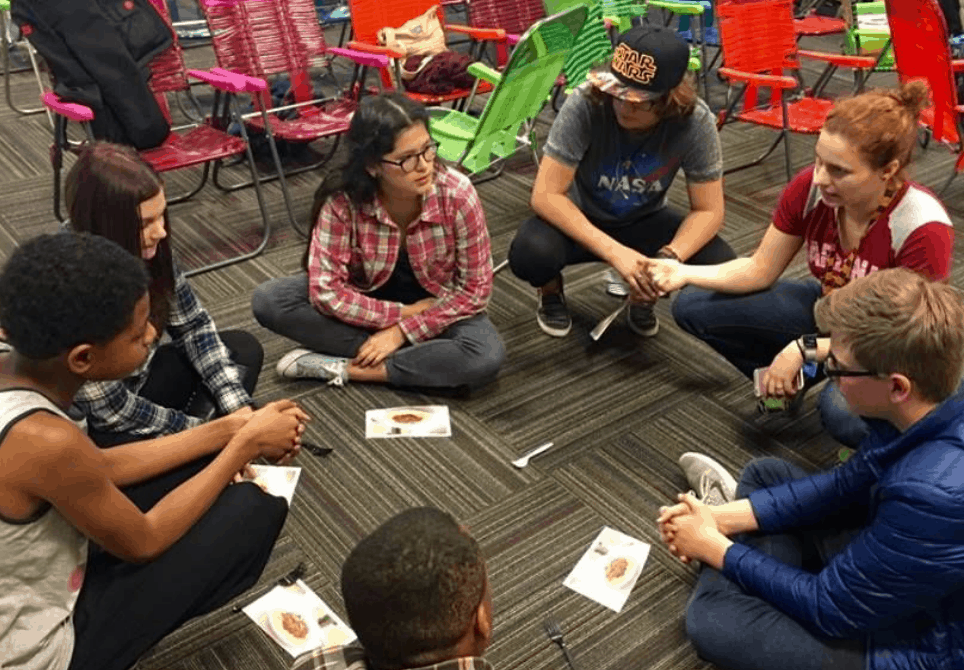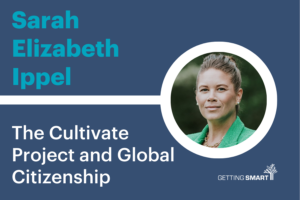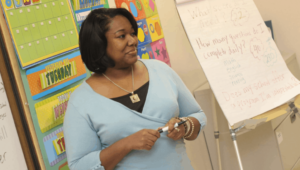Student Voices: Moving Beyond “When I Grow Up…”

By JoEllen Lynch
A major task for high schools today is to guide students toward postsecondary opportunities. In the best schools, a strong college and career office develops relationships with students and families, presenting them with possible postsecondary pathways and helping them secure opportunities that are a good fit.
But when should a school start this work? At Springpoint, we believe that strong school design includes a plan for college and career support even before freshmen step into the building. And students should be exposed to this in their very first year.
Equipping students to forge their own path is crucial given today’s rapidly shifting economy—according to one study, 40% of America’s workforce will be self-employed by 2020. So young people will increasingly need to independently seek out and take advantage of opportunities. We must enable them to connect their interests to possible career paths, and to develop relationships with leaders in their chosen field.
We spoke with a small group of enterprising, resourceful high school students about how they are leveraging in-school supports to forge a path toward their college and career goals. All of these students are enrolled in new, innovative high schools designed as part of Carnegie Corporation of New York’s Opportunity by Design initiative. The initiative focuses on creating small, competency-based and student-centered school models. In addition to sharing their own stories, these students also had some advice for their peers.
At The Urban Assembly Maker Academy, Amanda, a rising junior, began to consider a career in communications after realizing she enjoys public speaking and mentoring others. Amanda told us, “I’m an extrovert,” and in response, her teachers and principal gave her opportunities to present at national conferences and act as an ambassador for the school. Last fall, Amanda presented on a panel about new school start-up at iNACOL’s annual symposium, and she has spoken about her school with leaders of Parsons School of Design. Amanda’s teachers have helped her collect these outreach experiences into a portfolio she can take to colleges.
What is Amanda’s advice to students who also want to forge their own path? “You will find a variety of things you’re interested in, and the thing you want to do will constantly change. Open up doors, and keep opening up doors behind those doors. Try things even if you don’t think you’ll enjoy them.”
Also at The Urban Assembly Maker Academy, Steven, another rising junior, is planning to attend North Carolina State University for basketball. His school partners with a fellow district school to offer extracurricular opportunities to students, like basketball. Steven forged a mentoring relationship with his coach who in turn sparked Steven’s interest in NC State, and deepened his love of basketball. Though his mentor has moved on, Stephen stays in touch with him. His mentor continues to support him with schoolwork as well as basketball, reminding Steven that “in the term ‘student athlete’, student comes first.”
Rob, a rising sophomore at the Denver School of Innovation and Sustainable Design (DSISD), is thinking of pursuing either mechanical engineering, hedge fund management or computer science. Rob is an avid builder and inventor. “I also make things, like cool inventions. Recently, I built a bed that folds into the wall with a push of a button,” he says. “I also invented something to turn book pages because I’m lazy.”
Rob’s teachers have expertise in mechanics and coding—they give him opportunities to build on his interests and they bring a wealth of knowledge about the field. Next year, he’s planning to work with Ms. Burton, a computer science teacher at DSISD, to build an interactive website that students can use to easily calculate their current and estimated future GPA.
To help Rob hone in on a college major, his school also provides college visits where college students talk to high schoolers about their field of study and how they plan to parlay it into a career. Rob’s advice for freshmen: “Pick your passions and have a voice. Advocate for yourself.”
Luis, also from DSISD, is considering a gap year. His interests lie in community service and tech. With the help of his mother, who works in education and knows the importance of seeking out meaningful experiences, Luis has taken opportunities to get involved in his community. Last summer, he interned at an advocacy organization working on immigrant rights. He learned that this was too political for him and he wanted to try out working more closely with youth. So this summer, he is interning at a summer camp to support students and spark their interest in areas like STEM, arts and sports.
Luis’s school also supports him as he explores and narrows down his fields of interest through things like job shadowing experiences. Luis took advantage of this last year an inside look at Denver Technology Services to understand what a job in tech entails. He plans to go on more job shadows in the new school year too.
Luis’s advice is simple: “Talk to teachers about your interests, and ask about any opportunities that are available.”
All schools need to enable their students to succeed after high school. The Springpoint design process helps leaders provide these services to students through positive youth development. A key way to ensure that positive youth development is woven throughout this work is to recognize students’ interests and work closely with them as they explore related opportunities.
The schools in the Springpoint network are doing just this: working with students to build a robust catalog of projects, extracurricular activities, job shadowing experiences that will get them prepared for post-high school steps aligned to their skills and interests. The schools create opportunities to engage students more deeply in core academic classes by demonstrating the connection between coursework and how they can contribute to the world.
If we want to truly prepare all students for the economy of the future, high school leaders and teachers should more assertively connect students to opportunities that help them envision their future careers.
About “GenDIY”
eduInnovation and Getting Smart have partnered with The J.A. and Kathryn Albertson Family Foundation to produce a thought leadership campaign called Generation Do-It-Yourself (GenDIY)–how young people are hacking a pathway to a career they love–on The Huffington Post and GettingSmart.com. This campaign about reimagining secondary and postsecondary education and career skills will explore the new generation building a global economy and experiences that are impact driven and entrepreneurial.
For more on GenDIY:
- Career Awareness: Start Early, Go Online, Get Work Experience
- Preparing Students for the Gig Economy, Automation, and Uncertainty
- AI and Push Learning for Student Guidance and Advisory
JoEllen Lynch is Executive Director of Springpoint, a national organization that partners with school districts and networks to establish new, innovative high schools. Like them on Facebook and follow them on Twitter.
Stay in-the-know with all things EdTech and innovations in learning by signing up to receive the weekly Smart Update.





0 Comments
Leave a Comment
Your email address will not be published. All fields are required.